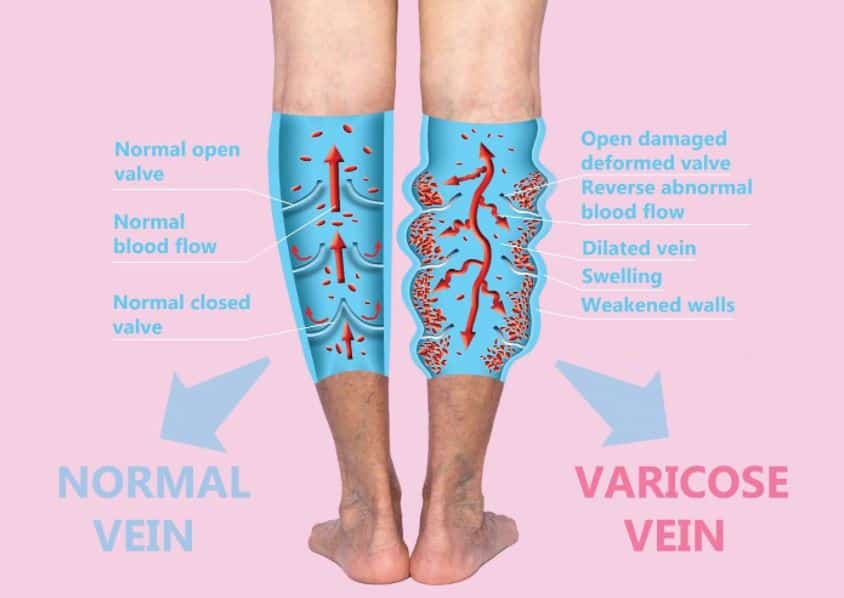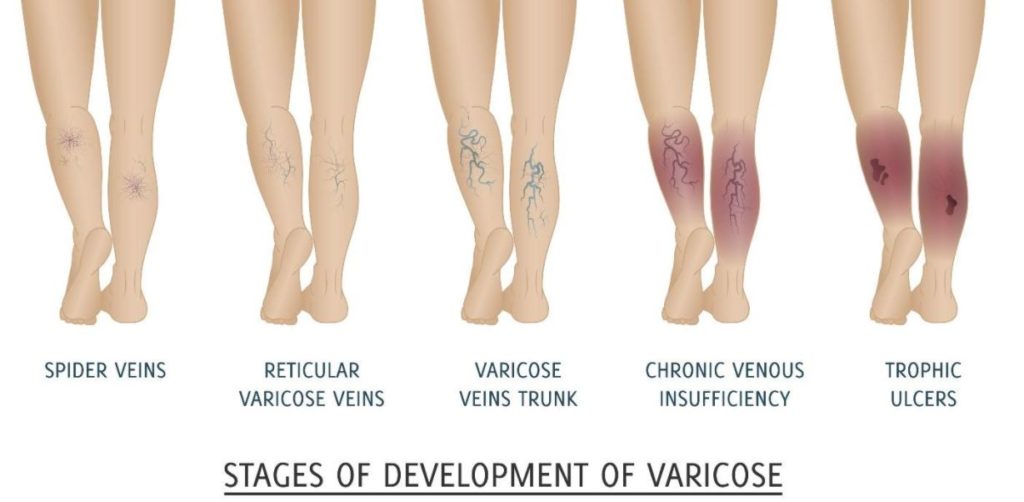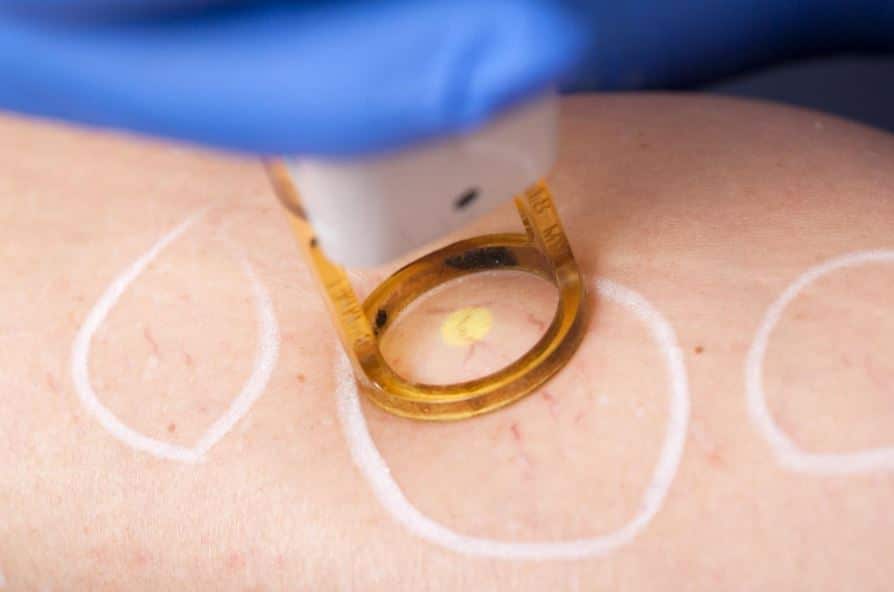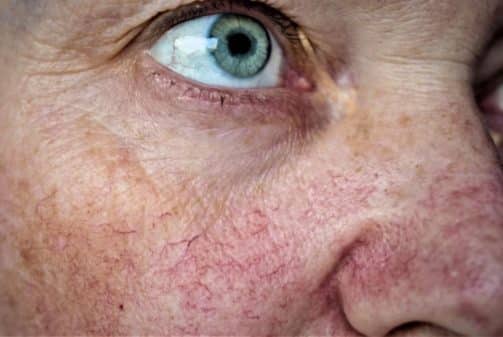Spider veins are like varicose veins, but smaller. Spider veins begin as tiny capillaries and appear as blue or red squiggles. They are small red, blue, or purple veins that commonly appear on the surface of the thighs, calves, and ankles. ⅓ of the adult female population is troubled with this common problem. They are associated with “feeder” veins and can also be associated with the larger underlying varicose veins. The medical term for spider veins is telangiectasia. These small veins are not harmful but often unsightly.

Spider veins usually take on one of three forms. The appearance of spider veins includes a spider shape with a group of veins radiating outward from a central point, tree branch pattern, and thin separate lines which are sometimes called thread veins. Spider veins are considered a cosmetic problem, rarely causing physical discomfort, although sometimes they can cause a feeling of leg heaviness, aching, itchiness, and night cramps. Spider veins can be addressed with a variety of non-invasive techniques. With the advancement of technology, we no longer have to just live with spider veins just because it is a mostly cosmetic problem. There are many options for spider vein treatment from light and energy treatment to injections.
What Causes Spider Veins
Spider veins can appear for a variety of reasons, such as hormone shifts, hereditary, pregnancy, weight fluctuations, or activities that require prolonged sitting or standing. It is important for those who are prone to spider veins to take note if this type of cluster appears and it can be an indicator of a more serious vein disease present deeper below the surface of the skin. Physicians often link facial spider veins in fair-skinned patients to long-term excessive sun exposure.

How Are Facial Spider Veins Treated
Spider Veins on the face and torso have different causes. Spider Veins on the face are often caused by sun damage, rosacea, and skin diseases [lupus, scleroderma] or in response to medications like steroids.
Spider veins of the face are usually treated with laser light therapy such as IPL(intense pulsated light), but some of the bluish veins around temples are often treated better with sclerotherapy. Spider veins of the hands and legs tend to do better with sclerotherapy but some tiny reddish vessels are well treated by a cutaneous laser or light treatment.

Intense Pulsated light is a light treatment that penetrates the skin to the dermis layer, it is also commonly known as a “photofacial,” often used to improve the discoloration or texture of your skin. IPL uses light to target a multitude of things within your skin. Unlike lasers, IPL uses more than one light wavelength, your physician can use filters to target specific skin issues.
IPL for spider veins directly targets the red pigment of the broken capillaries and damages the blood vessel using heat, after the vessel walls collapse, it is eventually absorbed back into the body. It is a less invasive option compared to Sclerotherapy which involves injecting the spider veins to collapse them. Sclerotherapy is usually reserved for more severe cases of spider veins so IPL may be the better option, especially if the problem area is on the face. If you plan to treat your spider veins, it’s necessary not to hesitate! Spider veins often get worse with time, growing and getting darker in color. IPL can have some added bonuses like smaller pore size, smoother skin, reduction of fine lines, erasing mild sun damage, and light brown spots.
What to Expect During Your IPL for Spider Veins Treatment
IPL for spider veins treatment is a quick outpatient appointment that usually takes 10 to 20 minutes and normal activity can be resumed that day. The recovery time is short and you could even book it during a lunch break! The physician or technician will use a handheld device on the affected areas, you may be required to wear protective eye coverings or goggles.

There may be a slight pain, like the snap of a rubber band but IPL machines are equipped with a cooling effect so discomfort should be minimal if any discomfort at all. After treatment, the vessels will slowly be reabsorbed and within a few weeks completely dissipate. The treated spider veins will be permanently gone but new spider veins could potentially develop which would need to be treated.
Who Is a Candidate for IPL Treatment?
IPL is best for fair to medium-skin-toned people struggling with spider veins on the face that are red or purple in color and not on the temple. Patients with darker skin may have more scarring or pigment changes in their skin.
How to Prevent Any Future Spider Veins
- Stay fit! Obesity is a risk factor for developing vein problems, stay active, exercise keeps your veins healthy.
- Avoid excessive sun exposure
- Use adequate sunscreen, especially if you’re fair-skinned
Also, it is recommended for patients to try and minimize the amount or duration of wearing high heels whenever possible. Although high heels do not specifically lead to spider veins at the ankles, their chronic use can lead to overall vein problems. The reason is that high heels minimize the full range of motion of the foot and ankle when walking, and therefore decrease the amount of blood flow by what is called the “muscle pump” of the calf. This can lead to an increase in venous pooling in the limbs, and eventually to vein problems.
It’s amazing we live in a time where it is not necessary to just suffer through it, The technology is ready and available. Ultimately, you will not be disappointed after getting IPL for spider veins on your face. The first thing anyone sees is your face and you deserve to show up feeling beautiful and confident, without the worry of covering your spider veins with makeup.
Contact Dr. Wright and His Team Today
If you’re struggling with facial spider veins and are considering the benefits of cosmetic treatment options, be sure to contact Dr. Wright and his team at the St. Louis Laser Vein Center today. We offer a comprehensive approach to patient care and can’t wait to partner with you on your path to change. We work hard to make sure that your cosmetic preferences are in line with your health history and always make safety and comfort top priorities.

